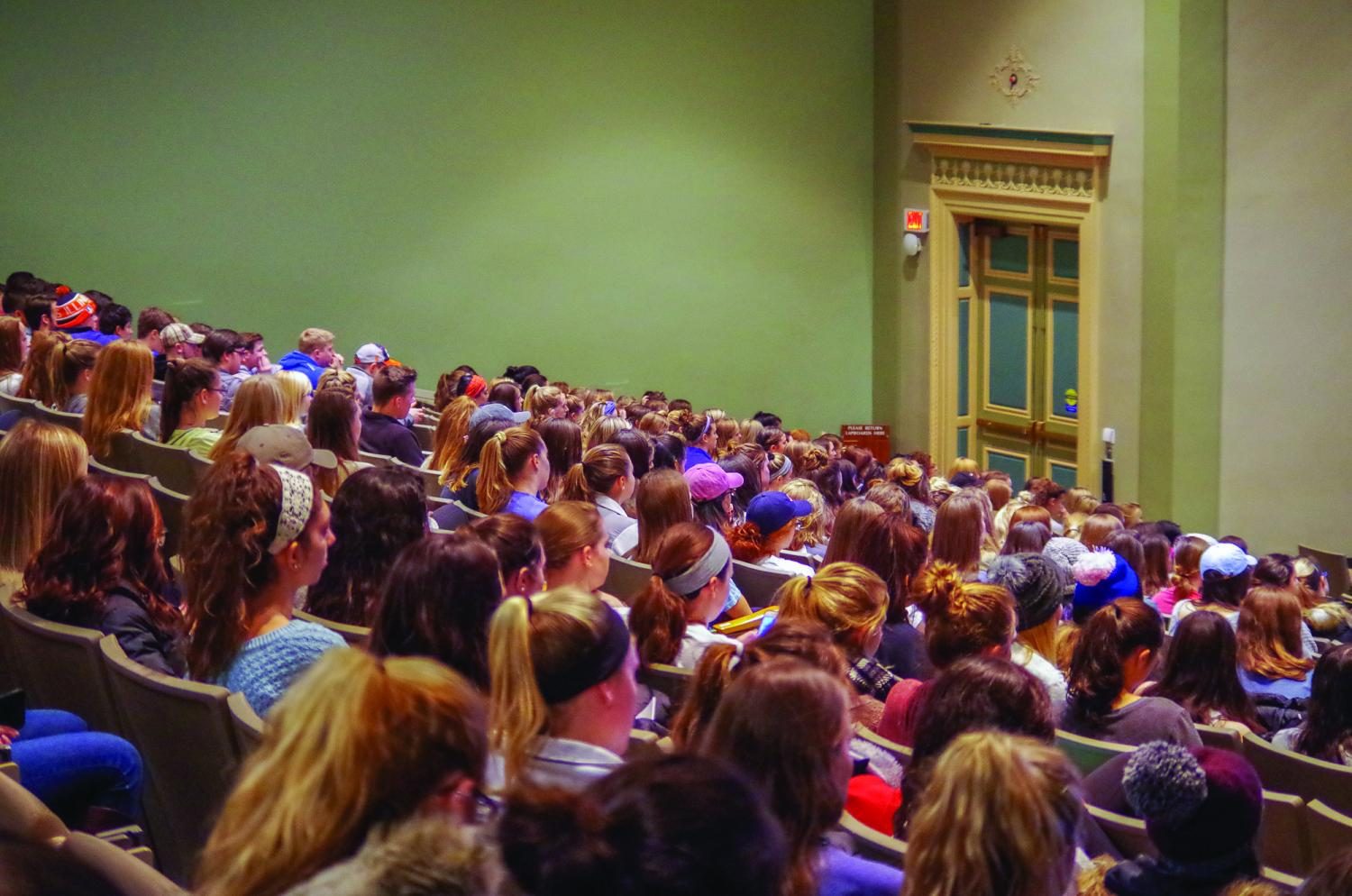4 ways to make large lectures seem small
Large lectures can seem overwhelming. Make sure you go the extra mile to ensure you get the most beneficial experience.
Aug 1, 2017
Walking into Lincoln Hall or Foellinger Auditorium on your first day of college can seem very daunting when you’re surrounded by 500 to 700 adults who look like they know what they’re doing. Compared to your average high school class size of 30 to 40 students, it feels like complete chaos, but I can promise you the campus will get smaller with time. Nonetheless, there are a few ways you can make big lectures feel a little smaller, even at the beginning of freshman year.
Attend discussion sections
One of the great aspects of big lectures is that the course is usually broken down into smaller sections that meet once a week. In this group of 20 to 30 students, you may feel more at ease to ask questions.
One of the biggest mistakes students tend to make is missing discussion sections, often because they view them as less important than lecture. This is the first step down a slippery slope. Discussion sections not only give you a better opportunity to speak up and ask unresolved questions from lecture, but also provide an environment where you can meet fellow classmates to form study groups.
Make a study group
I know for me, finding one or two friends in big lectures and helping each other out with studying and note taking was very beneficial.
Sometimes it might feel impossible or overwhelming to ask questions in lecture or class, but having peers who you can ask for verification can really help when you are cramming before an exam. Having multiple people take notes on the same class material also helps all members when they are missing notes due to sickness or an emergency.
Get The Daily Illini in your inbox!
If you don’t know anyone in your class on the first day, don’t panic. You’ll notice that students generally sit in the same area of the lecture hall every day, so by the third or fourth class, you may start recognizing people next to you. Introduce yourself before lecture or during your discussion section. Because most students realize how helpful study groups are, it’s likely they’ll be very friendly!
E-mail your professor and teaching assistants
At the start of every semester, it does not hurt to stay after class and introduce yourself to your professor or your teaching assistant. If you feel too nervous to face them in person, I advise you send them a personal email so that you can create that bond early on.
Your professors and teaching assistants are always there to help you, and most of the time, students do not take advantage of that. It will seem a lot easier for you to reach out for help or extra credit assignments throughout the semester if you already have an established relationship with your lecturers.
Reach out for help
The hardest thing about big lectures is that the professor cannot stop for long periods of time during lecture to make sure everyone in the class understood the material. This can lead to stress and anxiety when you keep getting more content thrown at you when you have not mastered what came before. It is important to reach out for help early on.
There are plenty of upperclassmen who probably took the same course before you, and they may have a lot of great insights and tips if you just take the time to ask. There are websites online where you can share notes and announcements with your classmates, YouTube or lecture videos that better explain course concepts and department faculty members who are always willing to help during office hours.
Although it might seem scary and overwhelming, you have all the necessary skills, knowledge and resources to excel in any big lecture. All it takes is a proactive approach to your own academic success and a little bit of networking.
JuYeon is a senior in Media.
[email protected]






